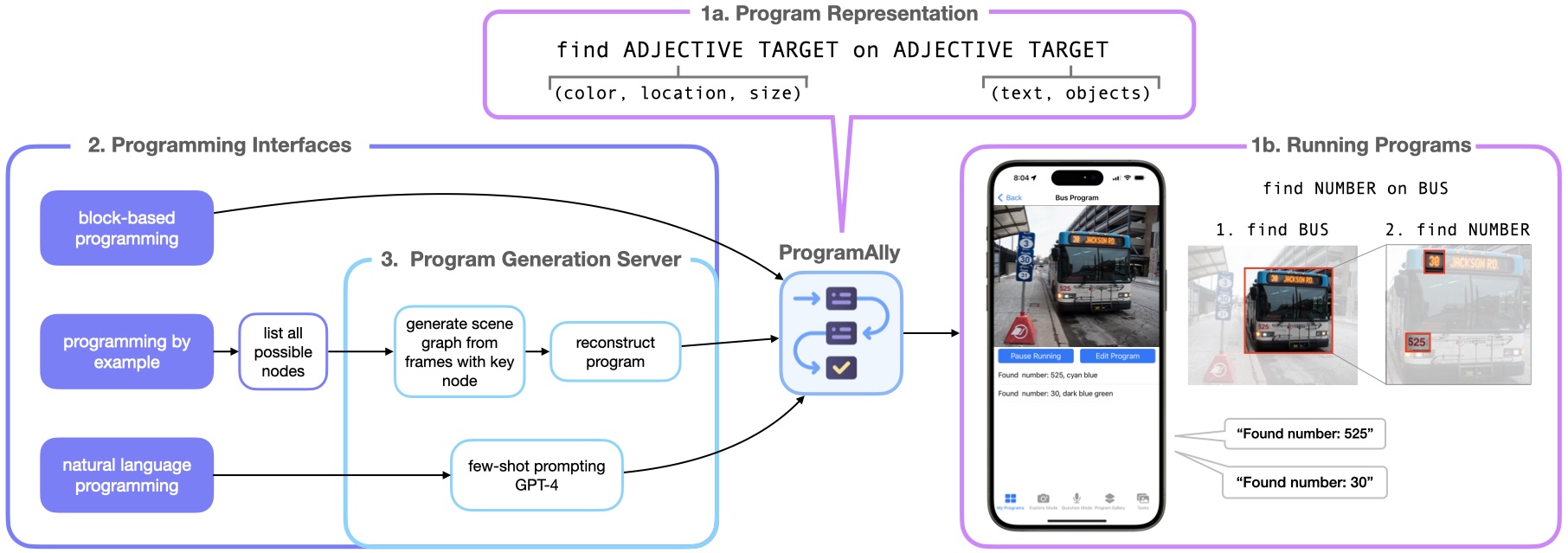
Existing visual assistive technologies are built for simple and common use cases, and have few avenues for blind people to customize their functionalities. Drawing from prior work on DIY assistive technology, this paper investigates end-user programming as a means for users to create and customize visual access programs to meet their unique needs. We introduce ProgramAlly, a system for creating custom filters for visual information, e.g., `find NUMBER on BUS', leveraging three end-user programming approaches: block programming, natural language, and programming by example. To implement ProgramAlly, we designed a representation of visual filtering tasks based on scenarios encountered by blind people, and integrated a set of on-device and cloud models for generating and running these programs. In user studies with 12 blind adults, we found that participants preferred different programming modalities depending on the task, and envisioned using visual access programs to address unique accessibility challenges that are otherwise difficult with existing applications. Through ProgramAlly, we present an exploration of how blind end-users can create visual access programs to customize and control their experiences.
Jaylin Herskovitz, Andi Xu, Rahaf Alharbi, and Anhong Guo. 2024. ProgramAlly: Creating Custom Visual Access Programs via Multi-Modal End-User Programming. In Proceedings of the 37th Annual ACM Symposium on User Interface Software and Technology (UIST '24). Association for Computing Machinery, New York, NY, USA, Article 85, 1–15. https://doi.org/10.1145/3654777.3676391
@inproceedings{10.1145/3654777.3676391,
author = {Herskovitz, Jaylin and Xu, Andi and Alharbi, Rahaf and Guo, Anhong},
title = {ProgramAlly: Creating Custom Visual Access Programs via Multi-Modal End-User Programming},
year = {2024},
isbn = {9798400706288},
publisher = {Association for Computing Machinery},
address = {New York, NY, USA},
url = {https://doi.org/10.1145/3654777.3676391},
doi = {10.1145/3654777.3676391},
booktitle = {Proceedings of the 37th Annual ACM Symposium on User Interface Software and Technology},
articleno = {85},
numpages = {15},
keywords = {Accessibility, Assistive technology, Blind, Design, Do-it-yourself, End-user programming, Visual impairment},
location = {Pittsburgh, PA, USA},
series = {UIST '24}
}